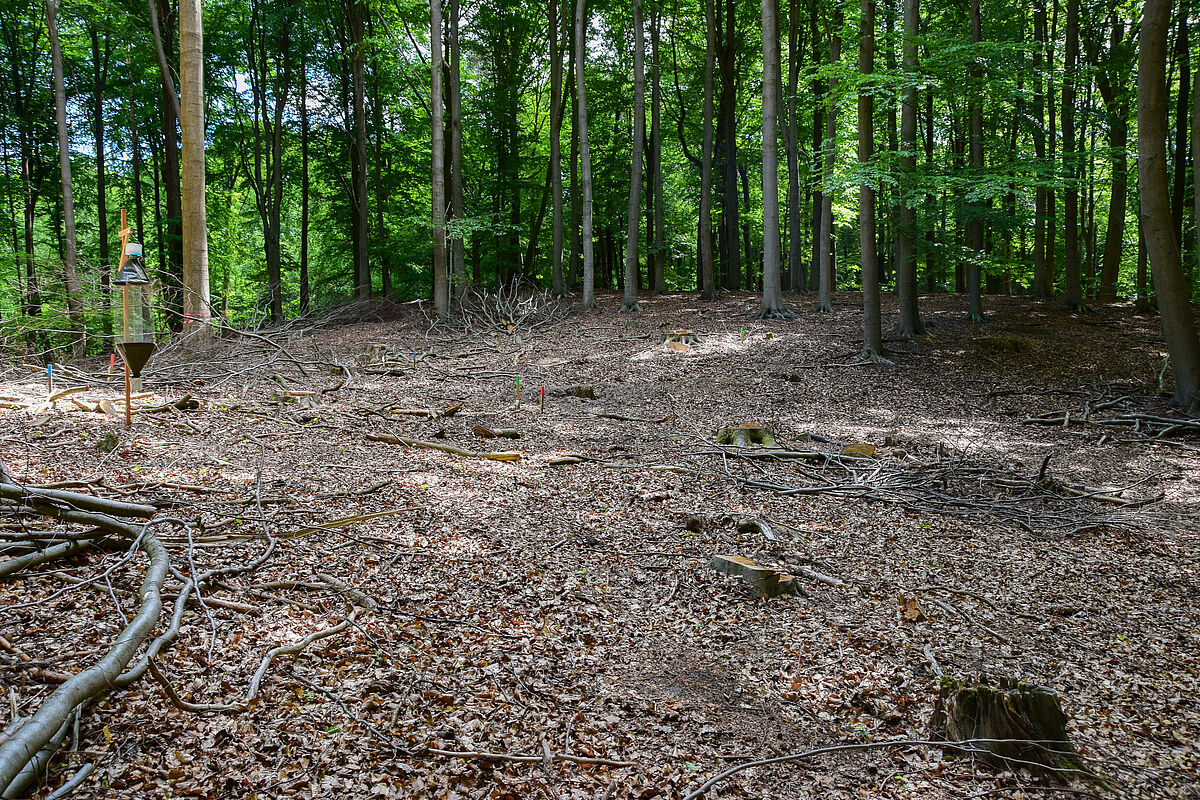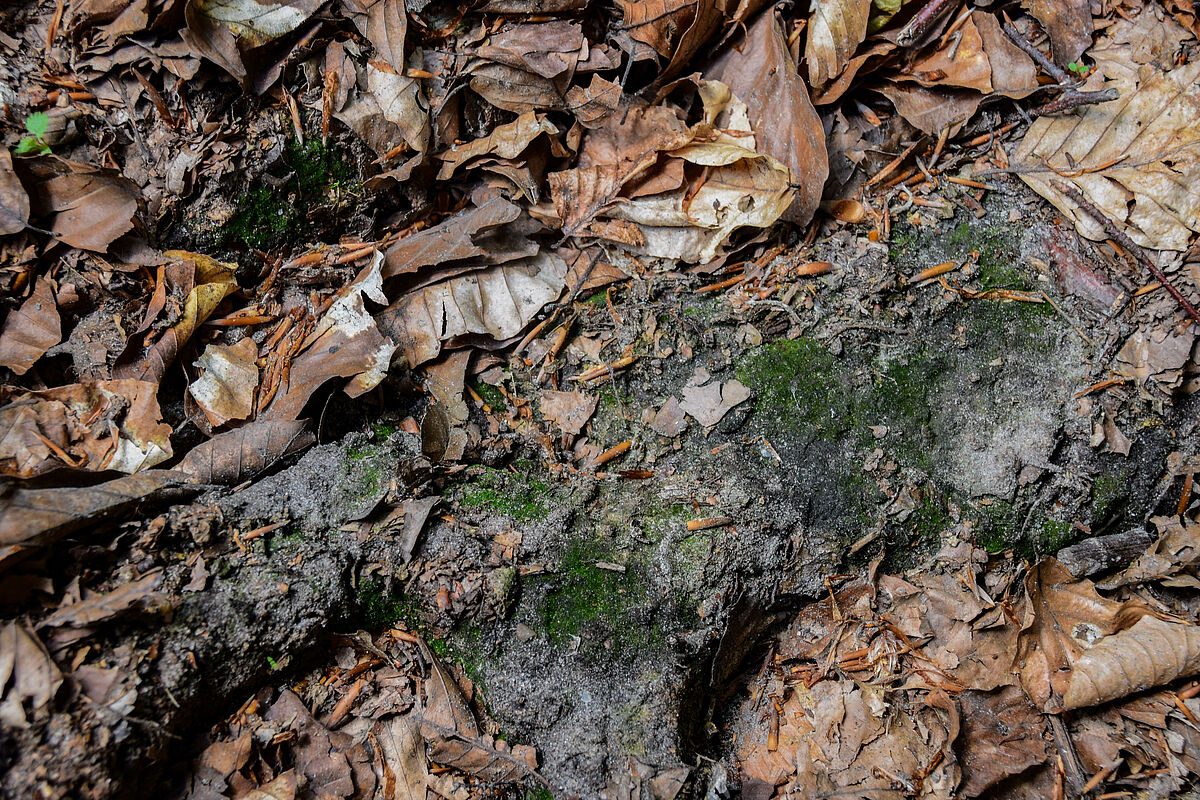Crustfunction III – Land use as driver for structure and function of biological soil crusts
The results and insights of the second phase of CRUSTFUNCTION gave a view on the potential for phosphorus transformation in biocrusts. The third phase is aiming to follow the development of biocrusts and their role in nutrient cycling in situ. Tree cutting experiments take place in the forest plots of the Biodiversity Exploratories, in which trees are removed within a radius of 30 m. These efforts lead to exposed forest soil on which biocrusts rapidly develop as pioneer-vegetation. Those biocrusts are measured in size and sampled regularly to follow their development and their role in nutrient enrichment. The potential of recovery of the biocrusts will be linked to the management intensity of the forest sites, the diversity of the biocrust community and to the biogeochemistry of N and P. The concentrations and chemical speciation of those elements help to understand whether biocrusts serve as sources or sinks for P- and N-components after strong disturbance (Who is doing what?). In ex situ-experiments we will combine stable isotopes for the identification of nutrient hotspots, together with transcriptomic analyses of microorganisms, which take part in the N and P cycling (Where happens what?).
This is the follow-up project of the previous phases of CRUSTFUNCTION I and II. It is part of the DFG priority program 1374 “ Biodiversitäts Exploratorien”



